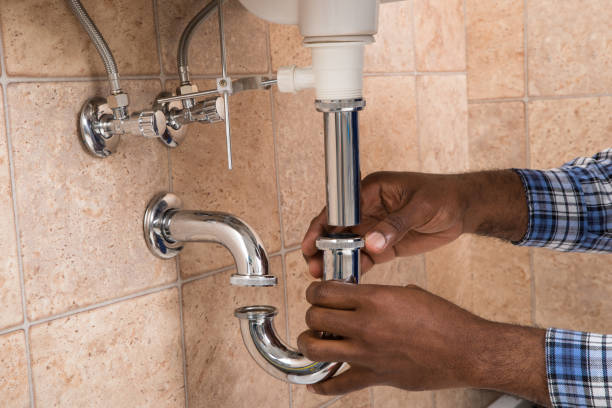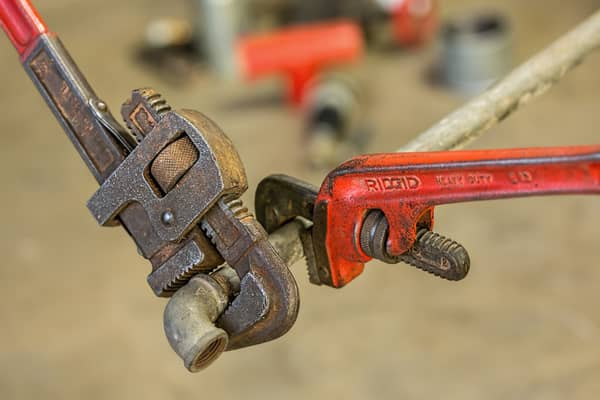Exploring the Fundamentals of Home Plumbing: A Beginner's Tutorial
Exploring the Fundamentals of Home Plumbing: A Beginner's Tutorial
Blog Article
The publisher is making several good pointers about Plumbing basics: How your home plumbing works overall in the article on the next paragraphs.

Plumbing is an important element of any home, responsible for providing clean water for drinking, food preparation, and showering, along with eliminating wastewater safely. Understanding the essentials of home plumbing is necessary for every single property owner to ensure correct upkeep, troubleshooting, and, if required, repairs. In this beginner's overview, we'll cover the essential concepts of home plumbing to assist you become extra accustomed to exactly how it works.
Water System
The water system system brings clean water right into your home from a local water source or an exclusive well. It contains a primary water line that attaches to your home's plumbing system, normally located underground. A water meter gauges the amount of water eaten, while a shut-off valve permits you to manage the flow of water right into your home.
Plumbing Fixtures
Plumbing components are gadgets that supply water to numerous parts of your home and include sinks, taps, commodes, showers, bathtubs, and appliances such as dishwashing machines and cleaning machines. Each fixture is linked to the water system through pipes and fittings and may have its shut-off valve for upkeep or emergencies.
Water Heater
The water heating system is in charge of heating water for domestic use, consisting of showering, food preparation, and cleansing. Typical types of hot water heater consist of tank-type water heaters, tankless (on-demand) water heaters, and heatpump hot water heater. The hot water heater is attached to the supply of water system and supplies hot water to plumbing fixtures as required.
Water drainage System
The drainage system removes wastewater from your home and carries it away to a sewer therapy center or septic tank. It consists of a network of pipelines, installations, and components that carry wastewater from plumbing components to the major sewage system line or septic tank. Appropriate drain is important to prevent blockages, backups, and sewer leakages.
Ventilation System
The ventilation system helps maintain appropriate air pressure and prevent sewer gases from entering your home. Vent pipes, also known as vent stacks, extend from plumbing fixtures to the roof, allowing sewer gases to escape safely outside. Ventilation pipes additionally enable air to go into the water drainage system, helping with smooth wastewater circulation and protecting against suction or vacuum cleaner results.
Typical Plumbing Tools
Having the right tools available is important for carrying out basic plumbing repairs and upkeep jobs. Typical plumbing tools consist of flexible wrenches, monkey wrench, pliers, pipe cutters, hacksaws, bettors, augers (or drainpipe snakes), and Teflon tape. Having these tools readily offered can assist you tackle small plumbing concerns effectively.
Fundamental Plumbing Repair Work
While some plumbing repairs might need expert assistance, lots of typical issues can be resolved with fundamental DIY strategies. Discovering exactly how to fix a dripping faucet, unblock a drainpipe, replace a toilet flapper, or fix a dripping showerhead can save you money and time on plumbing repair services.
Conclusion
Understanding the basics of home plumbing is crucial for every single house owner to keep a safe, practical, and reliable plumbing system. By familiarizing yourself with the water system, plumbing components, drain system, air flow system, common plumbing tools, and standard repair services, you can confidently resolve small plumbing problems and guarantee your home's plumbing system operates efficiently.
Plumbing for Beginners: A Comprehensive Guide
If you’re a beginner when it comes to plumbing, don’t worry; you’re not alone. Plumbing may seem intimidating, but with the right knowledge and a little practice, you can handle many common plumbing issues on your own. In this comprehensive guide, we will demystify the world of plumbing for beginners, providing you with the basic knowledge and skills needed to tackle common plumbing problems and even take on some DIY plumbing projects.
The Importance of Basic Plumbing Knowledge for Beginners:
First and foremost, basic plumbing knowledge gives you a solid foundation. It helps you grasp the key concepts and terminology that are essential in this field. By learning the basics, you’ll be able to build upon that knowledge and tackle more complex plumbing tasks in the future.
Having a basic understanding of plumbing also enables you to handle common issues that may arise in your home. Picture this: a leaky faucet or a clogged drain. With some basic plumbing knowledge, you’ll have the confidence to troubleshoot and fix these problems on your own. It saves you from unnecessary expenses and the hassle of waiting for a professional to arrive.
As a beginner, learning the basics of plumbing empowers you to take care of your own home. It gives you a sense of independence and self-reliance. You’ll no longer have to rely solely on professionals for every small issue that pops up. Instead, you can handle many tasks yourself, saving time and money in the process.
Remember, everyone starts as a beginner. Embrace the learning process and take small steps to expand your plumbing knowledge. There are plenty of online resources, tutorials, and even local workshops that talk about plumbing for beginners.
Essential Tools for Plumbing for Beginners
As you start your plumbing journey, having the right tools in your toolbox is crucial. Let’s explore some of the must-have tools:
Adjustable Wrench:
This versatile tool is a staple in any plumber’s toolbox. It allows you to tighten or loosen nuts and bolts of various sizes. Make sure to have an adjustable wrench with a comfortable grip.
Pipe Wrench:
A pipe wrench is specifically designed for gripping and turning pipes. It has serrated jaws that provide a strong grip, making it easier to loosen or tighten threaded pipes and fittings.
Plunger:
The plunger is a simple yet effective tool for clearing clogged drains and toilets. It creates suction when you push and pull, helping to dislodge blockages. Keep a good-quality plunger handy for those unexpected clogs.
Pipe Cutter:
When it comes to cutting pipes, a pipe cutter is your go-to tool. It creates clean, precise cuts without damaging the pipe. Look for a pipe cutter that can handle the pipe sizes you’re working with.
Hacksaw:
A hacksaw is useful for cutting through pipes, screws, and other materials. It’s a versatile tool that can handle different cutting tasks. Remember to use a blade suitable for cutting metal.
Tape Measure:
Accurate measurements are crucial in plumbing. A tape measure allows you to measure pipe lengths, distances, and dimensions accurately. Opt for a sturdy tape measure that extends a good length.
Pliers:
Pliers come in handy for various tasks, such as gripping, bending, and cutting. Slip-joint pliers with adjustable jaws are great for gripping pipes, nuts, and bolts.

Do you really like reading up on Understanding the Basics of Your Home's Plumbing System? Make feedback below. We would be pleased to find out your thinking about this blog posting. We are looking forward to see you back again in the future. Please take a moment to share this write-up if you enjoyed reading it. Many thanks for taking the time to read it.
Call Report this page